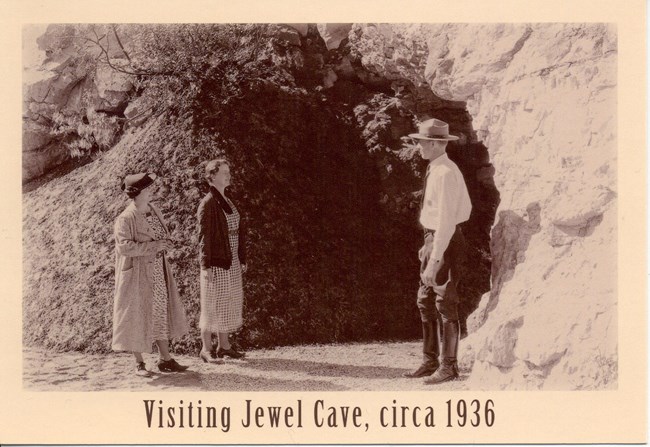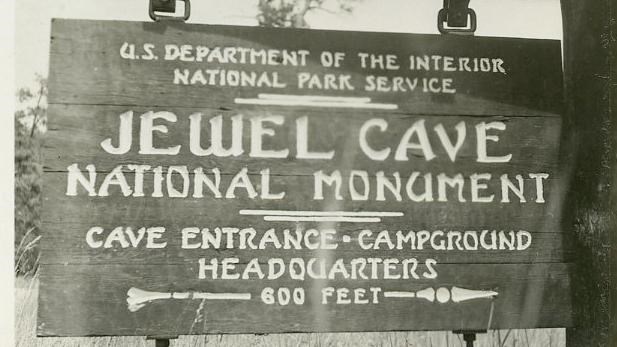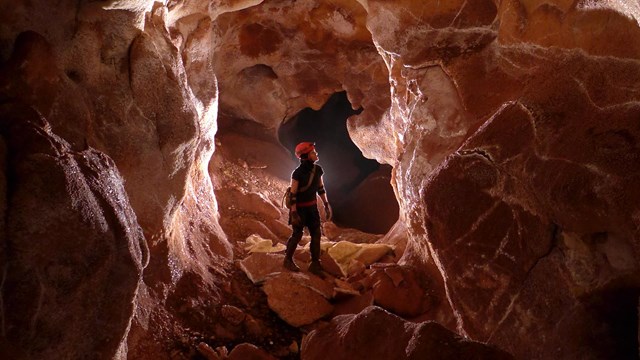
NPS Photo
Even though Jewel Cave is thought to be over 60 million years old, our human history started less than 150 years ago. The discovery of Jewel Cave is credited to the Michaud brothers, Frank and Albert, who were gold prospectors in 1900. They enlarged the natural entrance of the cave and filed a mining claim to mine the crystals they had found. After the mining was unsuccessful, the Michauds turned towards tourism and began offering cave tours. For more information please visit Planning Documents or contact us. |

Discovery & Early History
Whistling wind drew brothers Frank and Albert to a small blowhole that led to a big discovery. 
Becoming a Monument
Jewel Cave became the first cave ever protected as a National Monument in 1908. 
A Small Cave No More
Jewel Cave has gone from a small, two mile long cave, to now one of the longest in the world. |
Last updated: September 28, 2023
